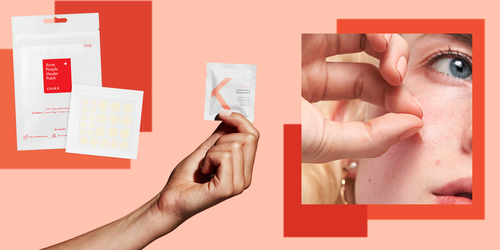If you're searching for the best acne treatments, you've probably read about acne patches and how they can effectively get rid of acne. But not everyone knows exactly what a patch is or why it works. It's a relatively new treatment that has been around for awhile but exploded in popularity thanks to late night talk shows and TV shows like Comedy Central's "The Daily Show" and The Ellen DeGeneres Show. Although the methods may seem unorthodox, many experts agree that patches work. Let's explain a few of the different ways they work.
COSRX Acne Prone Patch - This is the most popular type of acne patches. They consist of a series of small red bumps that have a tiny red apple shaped design. The smaller red apple slices hide the original blemish and allow the acne patch to heal in that area without blocking the blood flow to that area.
This seems pretty easy, right? Well, yes and no. According to some dermatologists, yes you do, but they say there are other factors involved. First, the krishnan technique requires a prescription. And second, dermatologists warn against over-use or abuse of these pimple patches because of potential side effects like increased redness, dryness, itching, and irritation.
The technique described above is the basic idea behind all the different acne patches. Although not everyone experiences the same results, many people have seen amazing improvements in their breakouts. So does pimple patches work? Let's take a look.
Let's start with the basic premise that helps explain the effectiveness of these little miracles: Hyaluronic acid is responsible for "plumping" up your skin. It is the main ingredient in Hero cosmetics. So does this technique really keep breakouts away? I was surprised to see how effective the hyaluronic acid was in both reducing and eliminating my breakouts. If you have problems with acne and whiteheads you should definitely give these a try.
As far as these acne patches go, the answer is yes they do. They work on the basic idea of creating a thicker skin with the hyaluronic acid, healing dots, and apple slices. The only thing that can be slightly tricky is figuring out how to get the spots to "appear" more regularly. There are a few things you can try such as spot powders that have a higher concentration of HA which can "trick" the skin to appear fuller.
My overall experience with these products was that they did work. I did not have much success trying them in conjunction with my prescription medications. I would apply the patches once a day, twice if possible, to my acne prone areas. I also used the peach slices method described above to help "hide" my whiteheads. I noticed that my scars appeared lighter than before, but that is to be expected because these patches work on reducing the appearance of pimples. I did, however, notice that my breakouts did take longer to disappear when I was using them, which is something that my dermatologist explained to me.
To finish off my review I will tell you what I don't think these patches work best suited for. If you are someone who is prone to oily skin, this product may not be the best choice for you. The sticky residue that some of the stickers leave on your skin can be irritating and may cause more breakouts. I would suggest trying them on a small patch of skin first and see if it works well for you.
Acne patches are still on the rise in popularity. This is due mainly to their effectiveness, but also because they are so easy and convenient to use. They are a great alternative to prescription acne medication and can reduce the appearance of unsightly pimples and blackheads that can be caused by too much oil or bacteria. In addition, they can also help prevent future breakouts by reducing the clogging of pores and the buildup of bacteria and excess dead skin cells.
While I did not have any serious problems with my acne until my mid-twenties, I know that many people struggle with acne or breakouts of all types during their teen years. For this reason, it is important to consider all of your options and find the treatment that works best for you. I do recommend trying them on a small patch of skin overnight to see if they reduce your breakouts. Most people do not require these treatments for prevention, but many find they are an effective way to control them or reduce the severity of a breakout.
If you are considering either of these acne patches or a spot treatment, I encourage you to try them as soon as possible. Typically, you will not notice any difference in the first day or two, but they can work very well over time if used regularly. My only caution is that both of these products contain salicylic acid, which can be irritating to sensitive skin. For this reason, it is often best to try them out before using them on your entire face. However, if you must use them, make sure to follow all of the instructions carefully.
